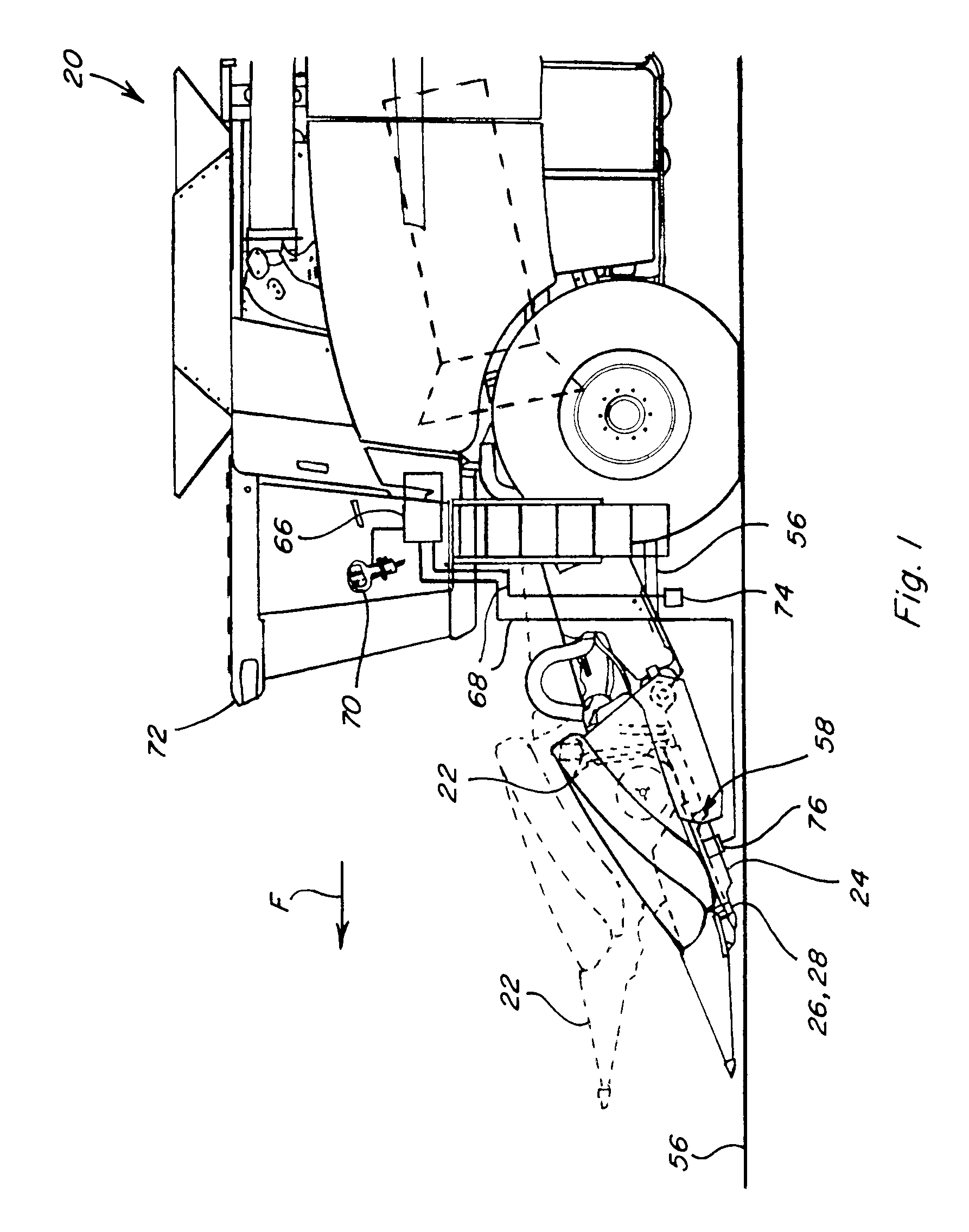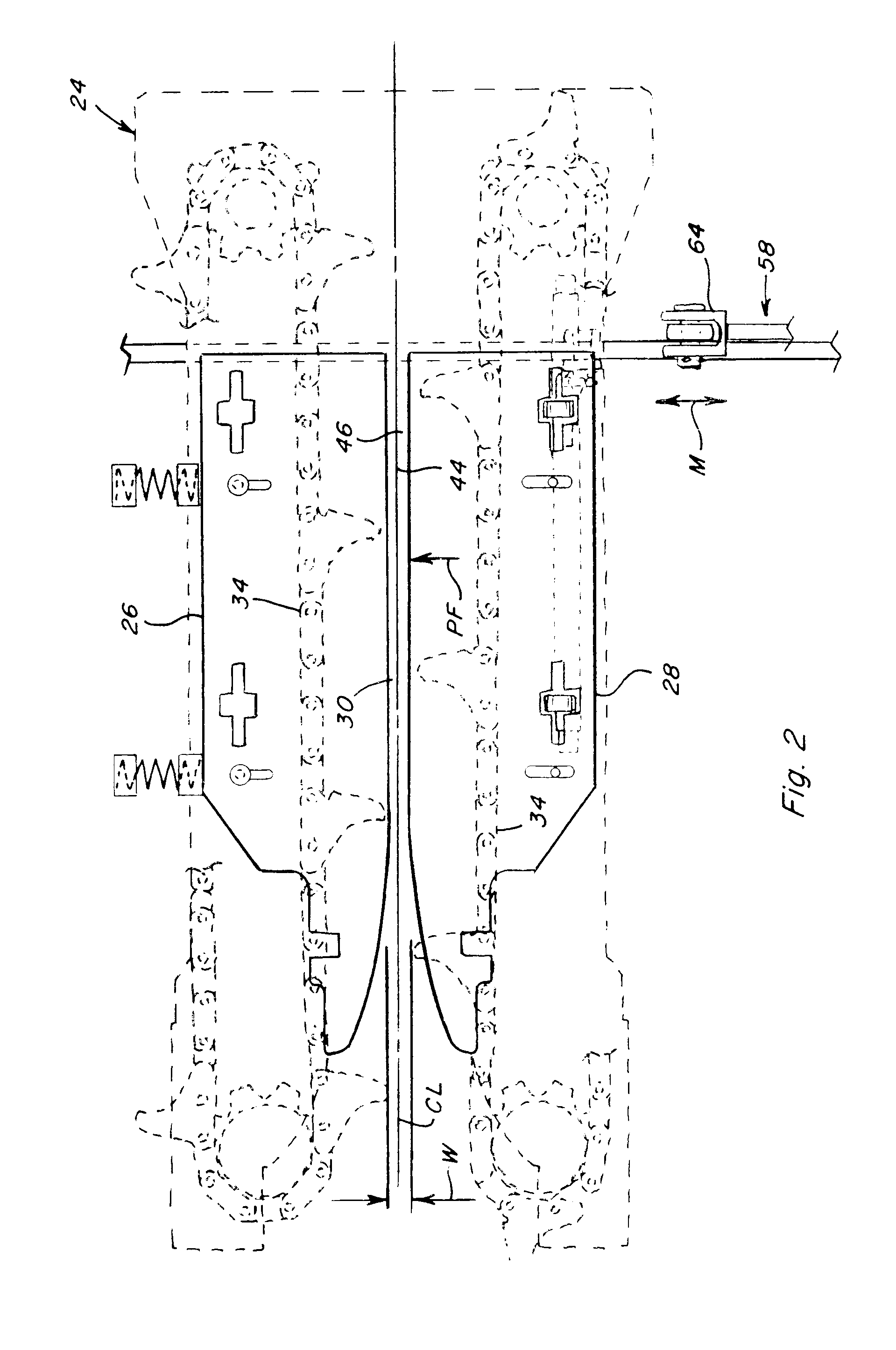System and method for automatically controlling deck plate position on a corn header
a technology of automatic control and corn header, which is applied in the field of system and method for automatically controlling the position of the corn header, can solve the problems of corn ears that may also tend to get pulled down, less support of the stalk, and broken stalks, so as to reduce the force, reduce or eliminate gaps or spaces, and reduce kernel loss
- Summary
- Abstract
- Description
- Claims
- Application Information
AI Technical Summary
Benefits of technology
Problems solved by technology
Method used
Image
Examples
Embodiment Construction
[0019]Referring now to the drawings, in FIG. 1, a representative harvesting machine 20, which is a combine, is shown, including a corn header 22 including a row of harvesting units 24 (see also FIG. 4) constructed and operable according to the teachings of the present invention. Here, harvesting units 24 are configured as corn ear harvesting units operable for receiving and gathering the corn stalks as machine moves in a forward direction, denoted by arrow F, and collapsing the stalks downwardly toward the ground, while removing and collecting the corn ears for further processing by machine 20. To accomplish this, units 24 include harvesting elements, which can include, but are not limited to, conventional gathering chains, snapping rolls, and the like, all supported on a suitable frame of the unit, in the well-known manner. It is contemplated, however, that harvesting units 24 of the invention have utility and can be configured for use to gather and harvest whole or partial stalks ...
PUM
 Login to View More
Login to View More Abstract
Description
Claims
Application Information
 Login to View More
Login to View More - R&D
- Intellectual Property
- Life Sciences
- Materials
- Tech Scout
- Unparalleled Data Quality
- Higher Quality Content
- 60% Fewer Hallucinations
Browse by: Latest US Patents, China's latest patents, Technical Efficacy Thesaurus, Application Domain, Technology Topic, Popular Technical Reports.
© 2025 PatSnap. All rights reserved.Legal|Privacy policy|Modern Slavery Act Transparency Statement|Sitemap|About US| Contact US: help@patsnap.com



